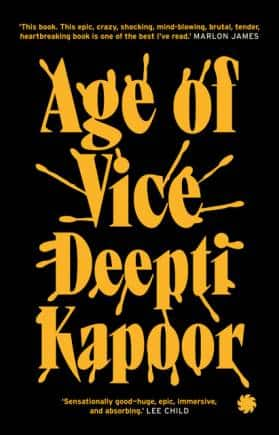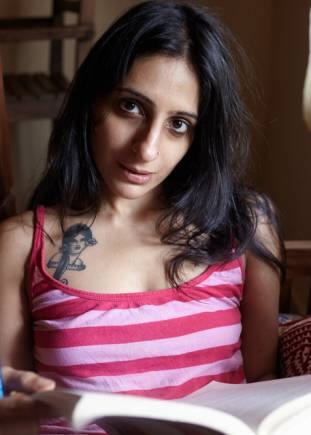India Gate in New Delhi. 'Age of Vice' moves from Delhi to UP and Manali to Goa, with a stint in London. (Photo: Shalender Kumar via Unsplash)
So far, there’s nothing especially new about the new year, with reports of tragic roadside deaths, forced evictions, and the usual political shenanigans. In this scenario, Deepti Kapoor’s new novel, Age of Vice, is distressingly topical.
A short passage from Arundhati Roy’s The God of Small Things can serve as a description of the novel’s terrain. “Personal despair could never be  desperate enough,” writes Roy. “…Something happened when personal turmoil dropped by at the wayside shrine of the vast, violent, circling, driving, ridiculous, insane, unfeasible, public turmoil of a nation.”
desperate enough,” writes Roy. “…Something happened when personal turmoil dropped by at the wayside shrine of the vast, violent, circling, driving, ridiculous, insane, unfeasible, public turmoil of a nation.”
Kapoor’s vast, violent thriller belongs to a sub-genre of subcontinental novels that deal with the amoral tussle between those who wield power and a new generation trying to usurp it. Such works borrow plot elements from pulp fiction but establish a distinctive tone of voice, structure, and interiority. Think of Aravind Adiga’s The White Tiger, Rahul Raina’s How to Kidnap the Rich, and Mohsin Hamid’s How to Get Filthy Rich in Rising Asia, for example.
Age of Vice has further been compared to The Godfather. Fair enough, given that it incorporates felonious families and savage infighting along with public assassination attempts, a concealed abortion, and large weddings with behind-the-scenes goings-on.
The book also tips its hat to Fitzgerald’s The Great Gatsby, consciously or otherwise. For a start, there are extravagant, decadent parties hosted by a central character known largely for a colourful reputation. There is also an earlier change of family name; a momentous car crash; and even a scene in which his girlfriend runs her hands over expensive shirts in his wardrobe.
To be clear, Age of Vice is much more than a rag-bag of literary odds and ends. It stands on its own as a spirited if sprawling work with time shifts, points of view, and settings from New Delhi to Uttar Pradesh and Manali to Goa, with a stint in London.
The novel portrays the actions of a group of disparate and often desperate characters in the early years of the twenty-first century. Among them is Sunny, the charismatic, weak-willed scion of a powerful New Delhi-based industrialist and nephew of a feared wheeler-dealer in Uttar Pradesh. Sunny is keen to get out of his family’s shadow, and others in his ken include Ajay, a taciturn and loyal factotum who has arrived at his current station after an early life of grit and torment.
Then, there's Neda, a young journalist alternating between a cynical and principled worldview, who embarks upon an affair with Sunny almost despite herself. Some of the moments between the two are among the more tender, if fraught, episodes of the book, bringing to mind passages from Kapoor’s 2014 debut, A Bad Character.
Somewhat dismayingly, another character with a decisive role to play in the denouement only turns up in the last third of the book. The fate of yet another – a disgraced, ambitious princeling – remains relatively undecided despite a formidable build-up. Perhaps the book’s reported sequels are among the reasons that they are introduced.
 Author Deepti Kapoor
Author Deepti Kapoor
Kapoor delves into the lives of these and others in separate sections powered by staccato, propulsive prose largely written in the immediate present tense. This is carefully patterned: scenes from one point of view are often clarified in later sections.
At times, though, the prose is not above employing overused phrases such as a “face only a mother could love”, “par for the course” and “bright-eyed and bushy-tailed”. There can be excessive reliance on objects of extravagance to set up a scene: “They moved to a dazzling saké, drank in square wooden cups, followed it up with Cuban cigars, their feet up on the table, snifters of Venezuelan rum cupped in their palms.”
Because of its vast compass, some issues touched upon seem unearned. There are token references to Ajay being a Dalit, for one. The discussions on lopsided development plans for the Yamuna can come across as purely journalistic. In contrast, another recent novel, Nilanjana Roy’s Black River, conveys a more vivid, lived sense.
However, Kapoor’s pacing is deft, and the momentum of the book overpowers such grouses as well as its length. The tributaries come together to form a torrent that rushes towards a cinematically spliced finale.
Age of Vice, then, is an exhilaratingly ambitious novel that uses the conventions of a thriller to comment on ugly Indian realities arising from systemic inequality and all-pervasive backroom cronyism. Such are the features of “Kali Yuga, the losing age, the age of vice,” a time when “the wheel will keep turning toward the dissolution that will swallow us all.”